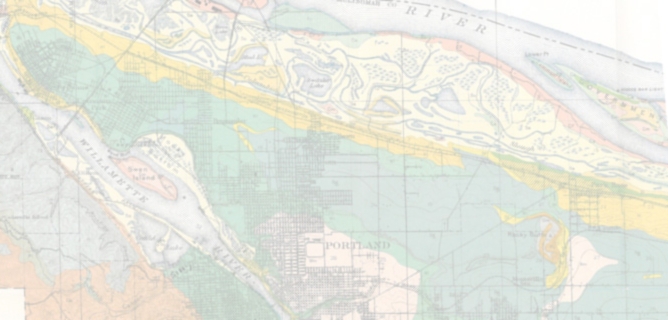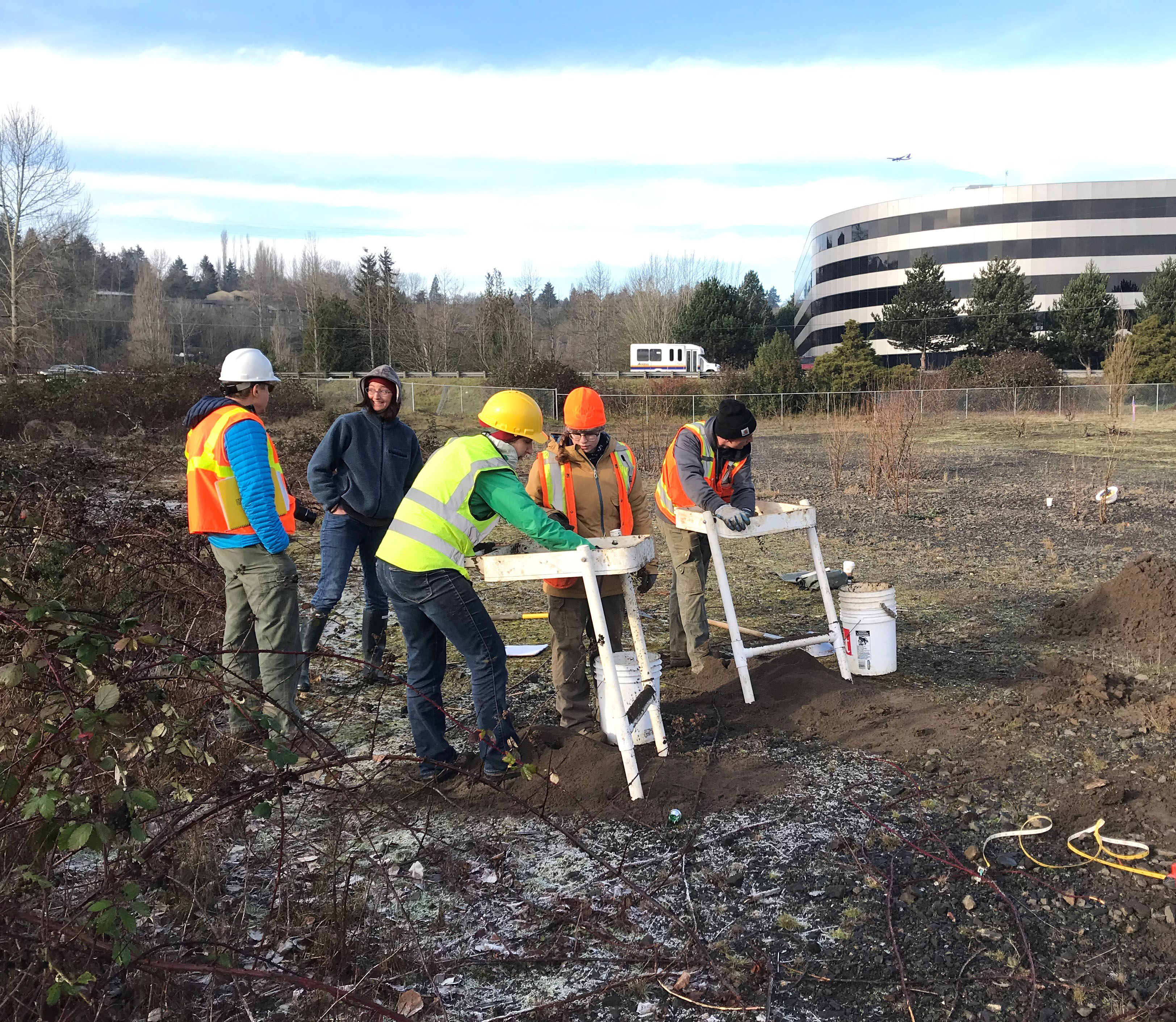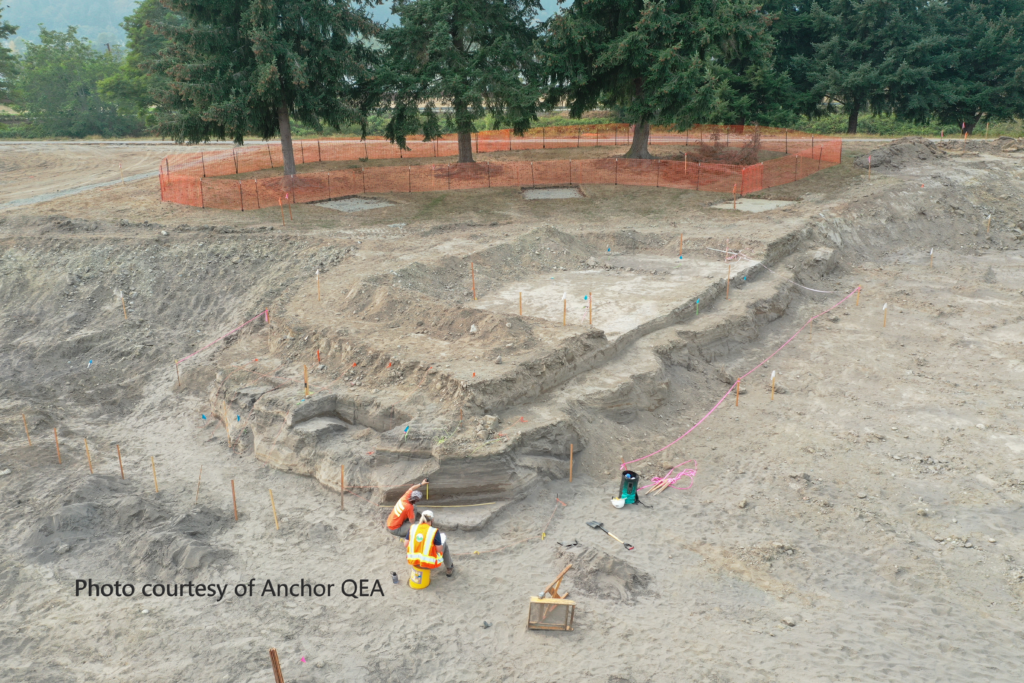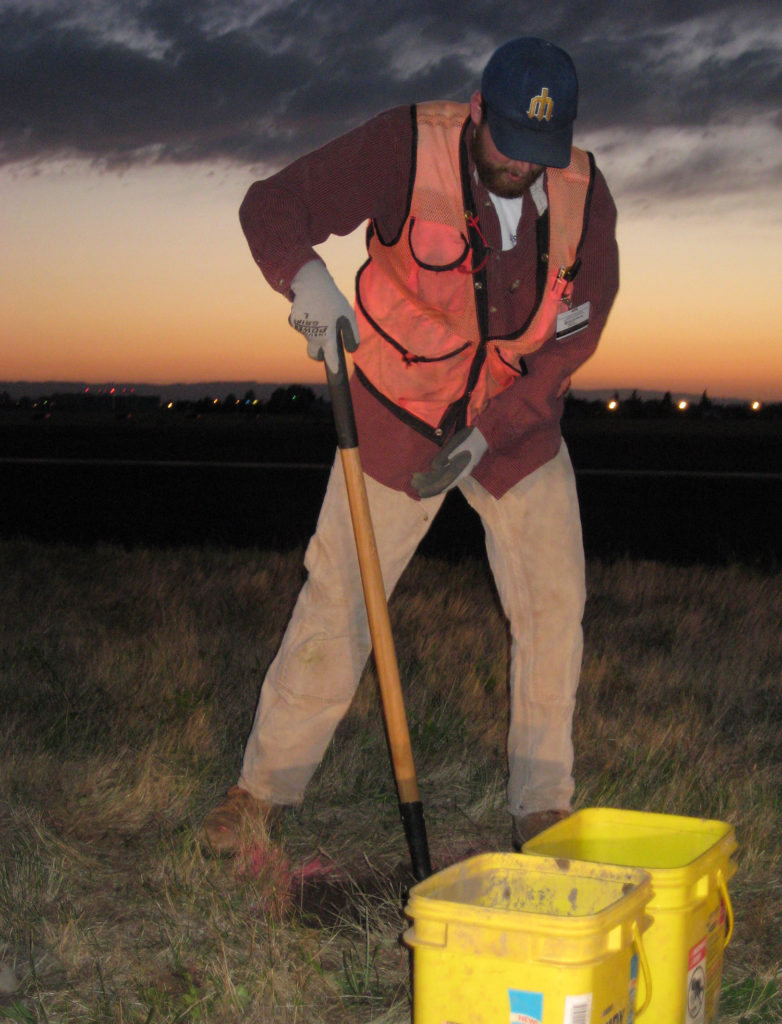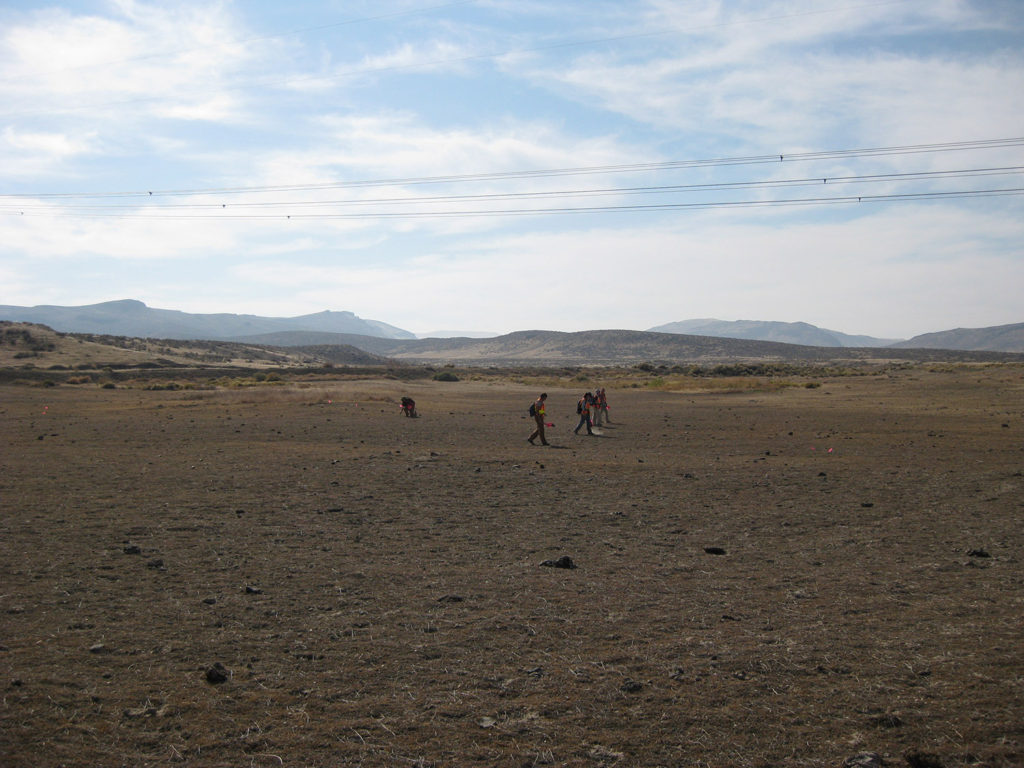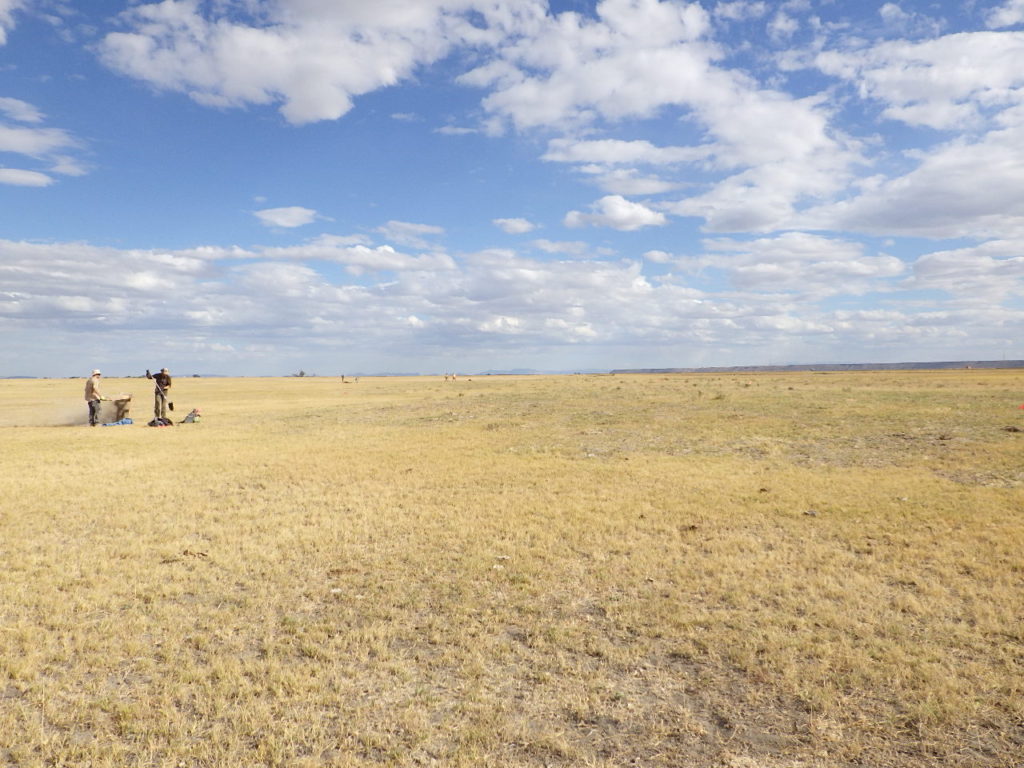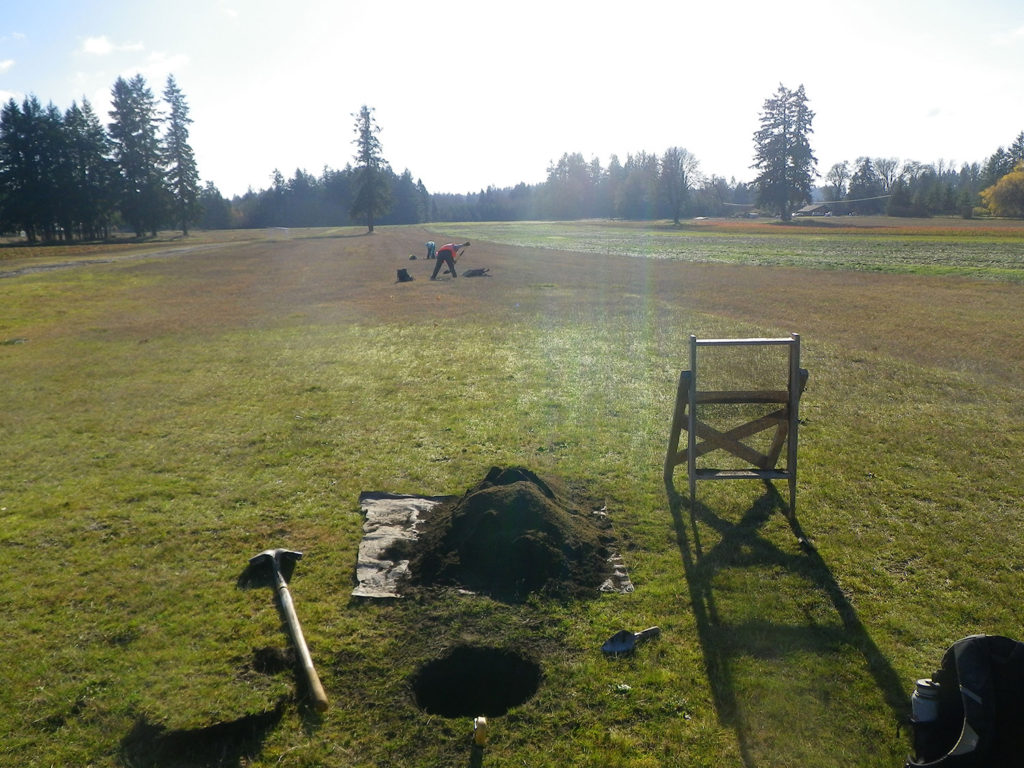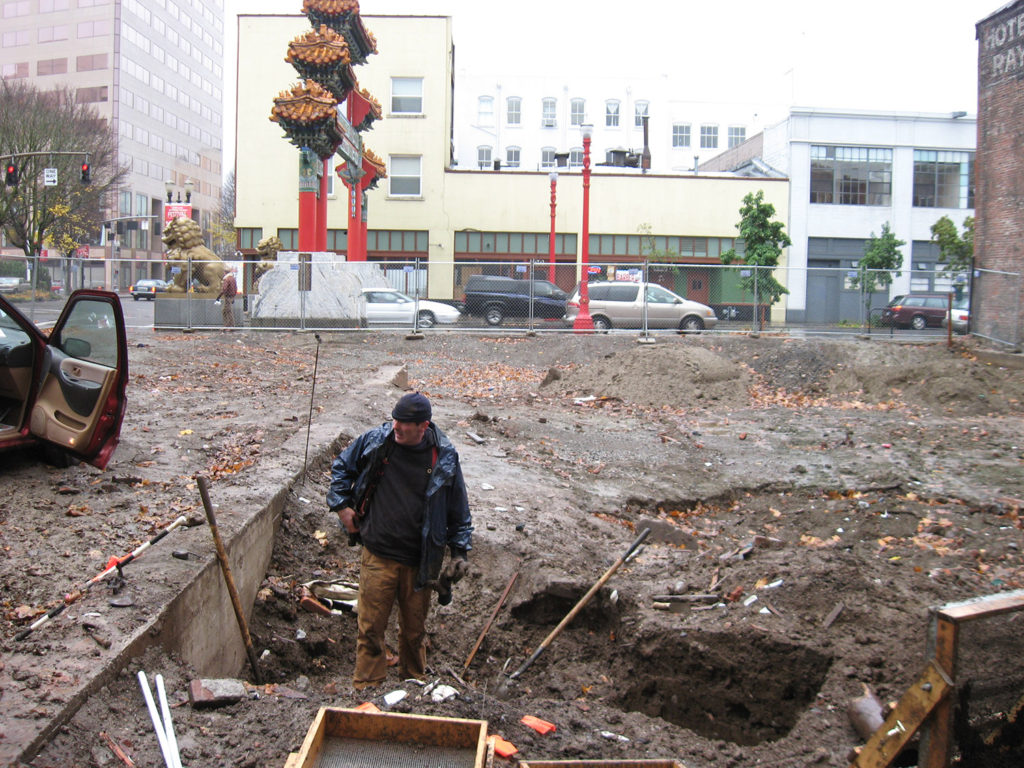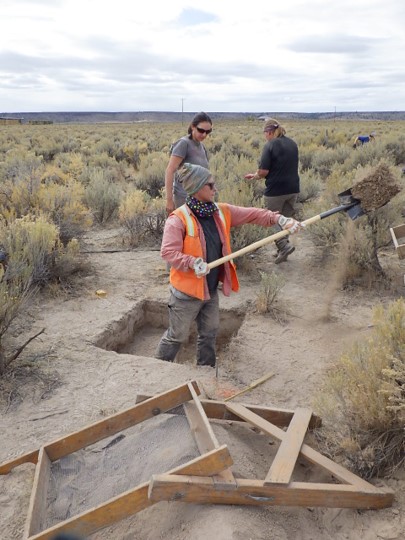PROJECTS
Burnside Bridge Earthquake Ready Project
Multnomah County has proposed replacing the existing Burnside Bridge with one that would survive a major earthquake. The bridge is in the Portland City Center and its survival would be critical for recovery efforts after an earthquake. WillametteCRA has been contracted to address project effects to archaeological and historical resources. The Bridge is listed on the National Register, and the APE includes the Skidmore-Old Town National Historic Landmark District. The survey for historic resources addressed 50 buildings, structures, and features. Notable among these was the Burnside Skatepark, which has a national and international reputation, and is only the second skatepark is the U.S. to be determined eligible for the National Register. Our research and fieldwork have also addressed the potential for both precontact and historic-period archaeological resources in the project area, creating innovative methods to manage archaeological resources in an urban core.
Cascade Crossing
We conducted Section 106-releated compliance for the western portion of Portland General Electric’s Cascade Crossing Project. This was a proposed 200-mile-long power transmission line from Boardman to Salem Oregon, including alternative routes, access roads, and staging areas. Our work on the 60-mile segment from the Cascade Crest to Salem included pedestrian survey in 2011 and excavated several thousand shovel probes in 2012. We identified over 70 precontact and 60 historic-era archaeological sites and isolates. This work involved coordinating with multiple federal and state agencies, tribal participation and ethnohistoric research, and a culturally sensitive plant survey conducted in conjunction with local tribes.
USACE Collection Analyses
We analyzed collections of artifacts from four precontact sites on the lower Snake River and Clearwater Rivers on behalf of the USACE. These large and important sites were excavated in the 1950s and 1960s prior to dam construction, but a complete analysis and reporting was never conducted. We worked with the Washington State University and University of Idaho museums to examine the artifacts and original site records, ultimately producing comprehensive reports.
Little River Large Wood Restoration
We assisted the Lower Elwha Klallam Tribe in the Section 106 compliance for a proposed a salmonid habitat restoration project along the Little River, a tributary of the Elwha River. The project location had undergone significant geomorphological changes following the construction of the Elwha Dam in 1912 and Glines Canyon Dam in 1927, and the removal of the dams between 2011 and 2014. Understanding the historic changes to the project area was critical to developing appropriate field methods. The project was funded by RCO, was partially on land owned by Washington Department of Natural Resources and required a permit from USACE. We conducted the assessment to meet the regulatory requirements of the numerous agencies, as well as internal Tribal cultural review.
Big Eddy-Knight
Working for the Bonneville Power Administration, we performed cultural resource studies for the 28-mile long-transmission corridor and access roads. This work included data recovery excavations at eight precontact archaeological sites and construction monitoring for over a year, often employing up to five archaeological monitors at one time. We successfully completed this project despite political conflict and the extreme sensitivity of this area that included historic Native American villages near Celilo Falls.
Downtown Redmond Link Extension
We assisted Sound Transit in their compliance tasks for the Downtown Redmond Link Extension, a 3.4-mile-long light rail segment with two stations. We coordinated with the Design/Build Project Management and Design/Build Construction teams as well as Sound Transit staff to implement the Archaeological Treatment Plan for the project. We provided construction monitoring in an area with culturally significant archaeological sites and conducted archaeological survey in higher probability areas within the larger project boundary. This project was subject to Section 106 as well as City of Redmond and King County cultural resources requirements. Federal Transit Administration was the lead federal agency. Nine Tribes were among the consulting parties.
New Sun Solar
We conducted pedestrian survey for several potential solar energy production facilities and test excavations at seven precontact archaeological sites. Test excavations at the seven archaeological sites, which themselves covered nearly 90 acres, included processing over 100 cubic meters of sediment, intensive surface collection, and large-scale mechanical trenching for a geoarchaeological assessment. We refined a projectile point chronology for the area and created a model of precontact settlement and subsistence over the past ca. 10,000 years for the Harney Basin. This model was then used as a framework for identifying site types and assemblage elements needed for assessing NRHP eligibility of our tested sites under Criterion D. We also assisted the Burns Paiute Tribe in constructing a context for tribal assessment of the tested sites under Criteria A and B.
Condition Monitoring
WillametteCRA conducted a multi-year site condition monitoring effort in McNary, Ice Harbor, and Lower Monumental reservoirs in southeastern Washington State. We directed Tribal crews from the Confederated Tribes of the Umatilla Indian Reservation in relocating sites and establishing baseline conditions to track impacts from erosion, looting and recreational development. We recommended actions for site preservation and completed updated forms reflecting changes in site conditions.
Damage Assessment
We assisted the Bonneville Power Administration with assessing damage to four archaeological sites in Kittitas County that occurred during work related to a large woody debris restoration project funded by the BPA. The investigation was complicated by disturbance from previous non-project related activities such as road maintenance, vehicle use, and looting. We provided recommendations for erosion control and protective measures to prevent further damage, and suggested ideas for off-site mitigation measures in lieu of traditional archaeological excavation.
Jennings Lodge Development
WillametteCRA was contracted to address a major new housing development subject to the NHPA. The cultural resources survey identified a precontact archaeological site and determined the project would result in demolition of a National Register-eligible historic district. Our test excavations determined the archaeological site was not National Register eligible. We provided assistance for the developer through a lengthy and contentious Section 106 process that included the federal agency, the Advisory Council on Historic Preservation, the SHPO, the National Trust for Historic Preservation, and neighborhood organizations vehemently opposed to the project. Ultimately, we helped to resolve differences and address neighborhood and agency concerns, and the development proceeded with the implementation of appropriate mitigation measures defined in a Memorandum of Agreement.
Port of Portland
While fulfilling multiple multi-year and ongoing on-call contracts, we successfully completed a range of projects for the Port of Portland. The largest of these projects was archaeological survey, site testing and data recovery at the oldest known precontact site within the Columbia River floodplain, and interpretive sign creation for the Troutdale-Reynolds Industrial Park. We also conducted site testing at a historic Japanese farmstead for the Gresham Vista Business Park. We coordinated closely with Port staff to meet airport security requirements while surveying the north runway expansion at PDX, including work conducted at night while the runway was closed. Other projects included documenting historic hangars and other buildings, monitoring construction activities, and creating a cultural resource management plan for the airport at large.
Lincoln Street Apartments Project
We assisted a private developer with an architectural history review prior to the construction of a new apartment building in Eugene’s Westside neighborhood. The project is supported with U.S. Department of Housing and Urban Development funds and was subject to review under Section 106. We coordinated the Area of Potential Effect with the Oregon State Historic Preservation Office, developed the survey methodology, researched the development of the City of Eugene and the Westside neighborhood, gathered data on each property and surveyed 85 aboveground resources located on 84 separate tax lots.
Chinook Wind Habitat Restoration
We prepared a fieldwork and study plan to address the possibility of deeply buried cultural resources for a habitat restoration project along the Duwamish River. King County Water and Land Resources Division plans to create 4 acres of new estuarine wetland, aquatic and riparian habitat area. Multiple significant archaeological sites are located near the parcel and the Chinook Wind project is part of an important cultural landscape. We conducted landform modeling, backhoe test pit excavation, stratigraphic documentation, and prepared a monitoring plan specific to the geomorphological setting.
Records Search Projects
In addition to the large, complex projects outlined here, we have experience conducting simple records searches in support of risk assessments and loan applications for smaller residential developments. We have teamed with Cascade Environmental and Richmond American Homes on over 30 of these research projects in the Portland-Vancouver metro area.
